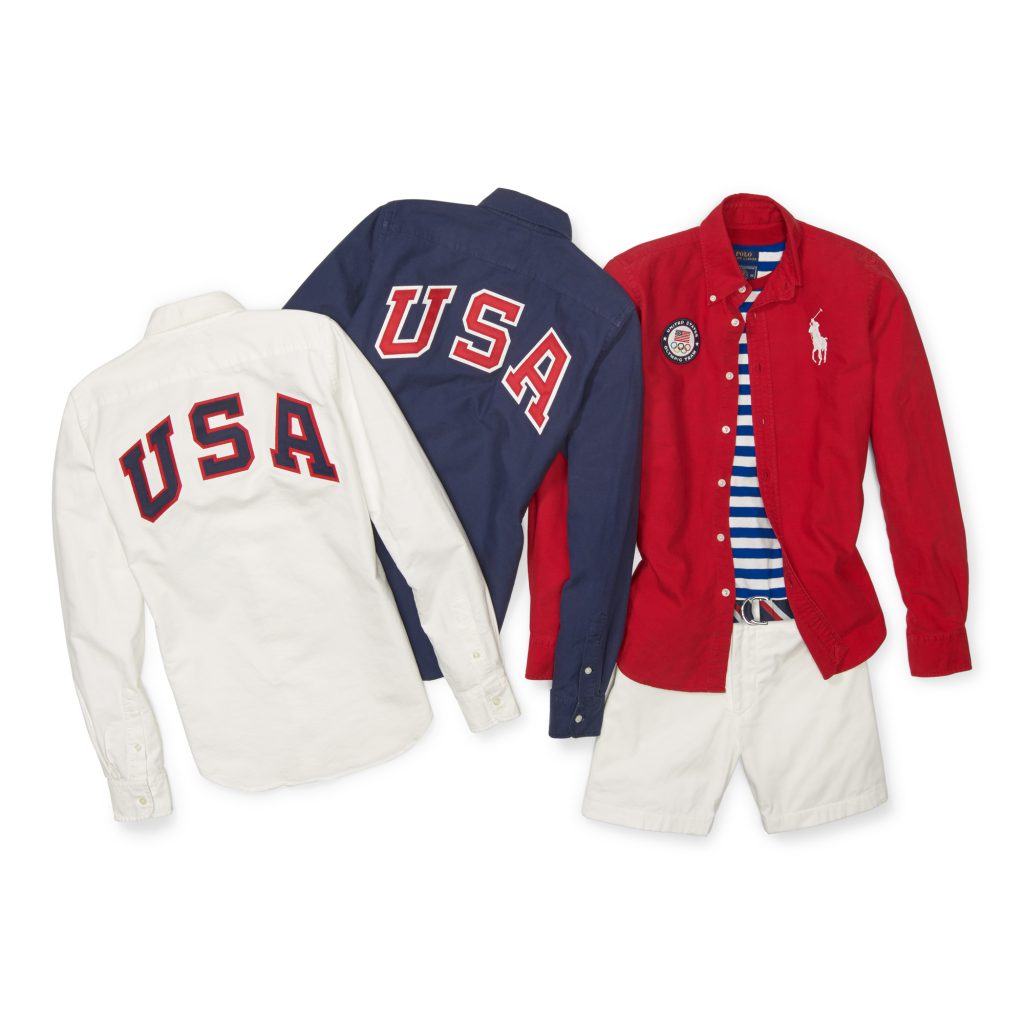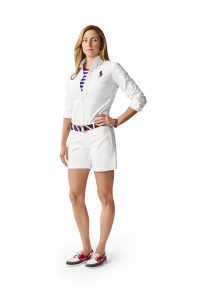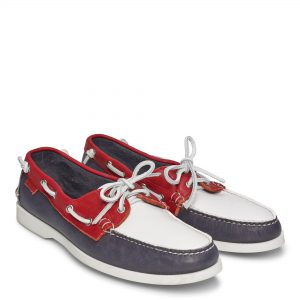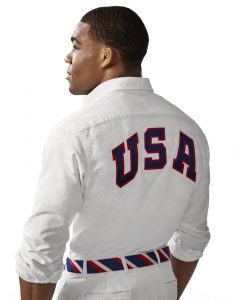
Opening and closing ceremony outfits will be American-made, but most competition uniforms won’t be.
More than 10,500 athletes from 206 nations will parade into Maracanã Stadium in Rio de Janeiro, Brazil, in less than 50 days for the opening ceremony of the 2016 Summer Olympic Games.
The entrance of the worldwide Olympic delegation is always a highlight of the opening ceremony, in part because many observers fervently cast judgment on the uniforms each team is wearing.

The athletes parade into the stadium these days is akin to a fashion show. Each country’s Olympic team will have an opening and closing ceremony uniform that range from a buttoned-up suit style to casual wear. And then there are the spectacularly colorful ensembles, which are patterned after a country’s cultural heritage.
In Rio 2016, Team USA will be wearing a semi-casual Polo Ralph Lauren designed outfit that reflects an American-style, Cape Cod-type boating ensemble. The uniforms will be awash in red, white and blue, but are much more toned down compared to the Ralph Lauren-designed 2014 Sochi, Russia Winter Games clothing. This year, they reflect an American preppy, summertime look.
And for the second straight Olympic Games, the Team USA opening and closing ceremony uniforms will be entirely designed and manufactured in the United States.
Ralph Lauren has been designing and manufacturing the U.S. Olympic Team opening and closing ceremony uniforms since 2008. At the 2014 Sochi Winter Games, Ralph Lauren debuted all-American made uniforms for the first time in many years. With the help of more than 40 U.S. apparel manufacturing companies, the company was able to once again produce an entirely Made in America clothing line for Rio 2016.
This has not only strengthened the American-made clothing industry but has also provided more jobs and extra work for the talented domestic clothing manufacturing workforce.
Among the items produced for Team USA are striped T-shirts, oxford shirts, white shorts, red, white and blue boat shoes and striped cotton bracelets.
The classic American boat shoes were manufactured for Ralph Lauren by Rancourt & Co. in Lewiston, Maine. The company had made private-label shoes for Ralph Lauren before landing the Olympics deal. Rancourt & Co. has increased its workforce from 20 employees to 65 because of its work with Ralph Lauren.
“We are thrilled to be partnered with Polo Ralph Lauren in making the shoes for Team USA’s uniform,” said company president Mike Rancourt. “This is one of the most exciting projects that we have ever worked on and it means so much to our company. We are proud that a product produced in Lewiston, Maine, will be represented on the world stage.”
Other Team USA American-made apparel items include closing ceremony oxford shirts, manufactured by New England Shirt Company, and white shorts courtesy of Hickey Freeman in Rochester, N.Y.
New England Shirt Company produced the hand-made oxford shirts at its 200-year-old factory in Fall River, Mass. All-American made clothing has been manufactured at the factory since 1933.

“Working with Ralph Lauren on the closing ceremony oxford shirt has been an incredible opportunity,” said Brad Herzlich, director of marketing at New England Shirt Company. “We feel an immense pride in having a hand in dressing the Olympic team.”
Hickey Freeman is known for its high-end, top quality men’s suits and jackets and employs about 450 people in the Rochester area, and is no stranger to working with Ralph Lauren. The two companies worked together to manufacture Ralph Lauren’s “Blue Line” of tailored suits and sports jackets. The suit construction was previously done in Italy before Ralph Lauren struck a deal with Hickey Freeman to bring the manufacturing, and the jobs that go with it, to Rochester.
“For Hickey Freeman to make part of the uniforms that will be seen in the closing ceremony in the Olympics is great,” Sen. Charles Schumer (D-N.Y.) said recently. “The real credit goes to the workers at Hickey. It’s one of the highest quality made garments in America that we have left. Billions of people will see the uniforms.”
Ralph Lauren will outfit more than 1,100 members of Team USA for the Rio 2016 Olympics and the Paralympic Games which begin on September 18 in Rio. But not everything worn by American athletes at the games will be American-made. While the opening and closing ceremony outfits will be Made in America, the majority of the individual sports competition uniforms will be largely made overseas.
But apparel for the USA Rowing team is manufactured by Boathouse Sports in Philadelphia.
A majority of the Olympic teams competing in Rio receive government funding from their respective nations. The United States Olympic Committee (USOC) does not receive government funding and is financed through corporate sponsors like Polo Ralph Lauren. As an official outfitter of Team USA, royalties from Polo Ralph Lauren Team USA apparel sales to the public are used to support the USOC and the athletes.

Uniforms made by Nike for sports such as basketball and track and field are manufactured offshore. So too the suits produced by Speedo for swimming and diving. These brand names have become leaders in the particular sports they service and are generous sponsors of Team USA.
Off the field of competition, there will be another reminder of Made in America clothing during television broadcasts. Hardwick Clothes menswear will be providing all of the NBC male on-air talent with a variety of suits and blazers manufactured at its facility in Cleveland, Tenn.
The goal of these smaller, Made in America apparel companies is sales growth. Partnering with Polo Ralph Lauren can only enhance their chances.
Individual athletes also have set their goals for performance at the Rio 2016 games. Perhaps a goal for garment manufacturers in the years to come should be to produce all Team USA apparel right here in America.
